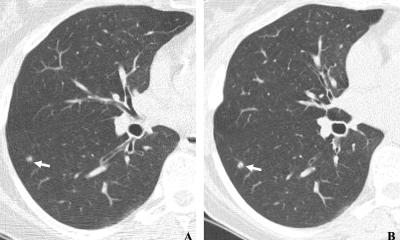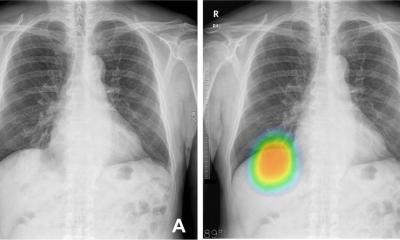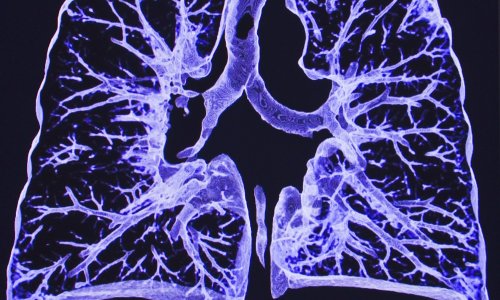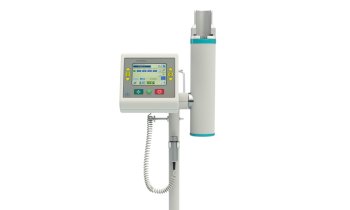New TMN descriptors linked to outcomes to improve patient care
When Lorenzo Bonomo, MD, first highlighted the growing importance of imaging for the staging of lung cancers, as the leading author of a highly regarded paper published in European Radiology, it was 1996. At that time the TMN system of descriptors for classification of lung cancers was in its 4th Edition, endorsed by professional societies worldwide, based exclusively though on a single database.

Professor Bonomo is today the Chairman of the Department of Radiological Sciences and Bioimaging at the Catholic University of Rome and also the President of the 2012 European Congress of Radiology. The TMN classification system has also advanced considerably, and the current 7th Edition brings significant changes, which Prof. Bonomo will present at the opening plenary session of ESTI 2012. “I do hope that the session on lung cancer and the new staging of lung cancer will be very well attended since lung cancer is the most common cause of cancer-related death in the world,” he said. “In everyday clinical practice, most cases are evaluated from several different points of view, but given the importance of imaging, I am convinced this topic will be of special interest to radiologists,” he told ESTI Times in this interview.
What is new in the 7th Edition of TMN classification?
Bonomo: Compared to the previous ones, the revised TNM staging system for lung cancer is more accurately correlated with survival. Changes in staging, such as downstaging of T4N0 and T4N1 to stage IIIA, are better related to outcomes and may offer further therapeutic possibilities to patients. This staging system is now recommended for both non-small cell lung cancer and small cell lung cancer. The T descriptors classification has been redefined. Previous editions distinguished two stages on the basis of tumor size, thus excluding local invasion. Three centimeters was the threshold between T1 and T2. The 7th Edition introduced new cut points at 2cm and 5 cm, thus adding new subgroups of T1 and T2. The 7th Edition also stated that tumors larger than 7 cm should be included in T3. No changes have been made to the N classification. M classification has been redefined.
What are the limitations of the 6th Edition for TNM classification that the 7th edition overcomes?
Bonomo: The 6th Edition was published in 2002, and no changes in TNM descriptors of the previous five editions were introduced. The main limitation in all of the previous six editions was the limited number of patients considered. In 1998, an international staging committee was established with the aim of developing an international lung cancer database. Between 1990 and 2000, the data from 100,869 cases were submitted from 45 sources in 20 countries. The final data set involved 81,495 cases. The limitations of the 6th Edition for TNM classification was, therefore, the limited number of patients.
What benefits do you find in using the 7th edition?
Bonomo: In my opinion the revised staging system for lung cancer is more accurately correlated with survival when compared with prior staging systems. Survival statistics from external studies have also confirmed the validity of these changes.
Some complain the new edition is “less intuitive and more complex” than the 6th edition with a steep learning curve.
Bonomo: Every time a new classification is introduced, the physicians who are supposed to use it have some kind of difficulty, because they are used to the previous edition. I think that the changes in the classification introduced in the new edition can help to clarify the classification of lung cancer, although we can expect further improvements in the next edition.
Technologies are changing rapidly in radiology. Have improved maging techniques contributed to improved staging?
Bonomo: Arguably PET-CT, widely used in everyday clinical practice, affects the tumor staging, especially the staging of lung cancer. Yet, although it has been used in clinical practice for several years now, PET imaging has not been taken into consideration in the TNM 7th Edition.
What role does TNM play in a multidisciplinary approach to staging?
Bonomo: In the department I chair, TNM classification is routinely used in oncologic
imaging, not only for what concerns lung cancer but also with regard to the other most frequent malignancies. This also aims at sharing a common language with other clinical colleagues, and I personally believe that every vdiagnostic exam report of tumor staging has to be concluded with a reference to the current staging system. The role of TNM classification in a multidisciplinary approach to tumor staging, as currently happens in the multidisciplinary tumor boards, provides a common language, enhancing the communication among all physicians involved in the management of a tumor patient. In this way, they can better develop a tailored treatment for the patient under consideration.
The revision of TNM for the 8th edition is already underway. What is significant about the process for this new update?
Bonomo: Since the publication of the 7th edition new studies have been published, approved by the most important European and American societies. These will certainly be taken into consideration for the next edition. For example, as for T descriptors, the term BAC needs to be replaced by AIS and MIA, since they both have 100% or near 100% disease survival after resection: they may represent a unique subset with better prognosis and different management.
For your diary
The revised TNM Staging –
a guide for radiologists
Session ”Lung cancer”
Lorenzo Bonomo, Rome, Italy
Friday June 22 at 11:00 - 11:30
####
Profile
Lorenzo Bonomo is Professor of Radiology and Chairman of the Department of Radiological Sciences and Bioimaging at the Catholic University Sacro Cuore in Rome, where he is also Director of the Radiology Training Program. His main research field is cardiothoracic imaging. Lorenzo Bonomo is honorary member of the Italian Radiological Society SIRM, of the Argentinian Radiological Society, of the French Radiological Society, and of the Spanish Radiological Society.
He has been President of the European Society of Thoracic Imaging (2000-2001), President of SIRM (2002-2004), President of the First World Congress of Thoracic Imaging and Diagnosis in Chest Disease (2005), and President of ECR 2012. He is member of the Executive Council of ESR and ESR Second Vice President.
19.06.2012











